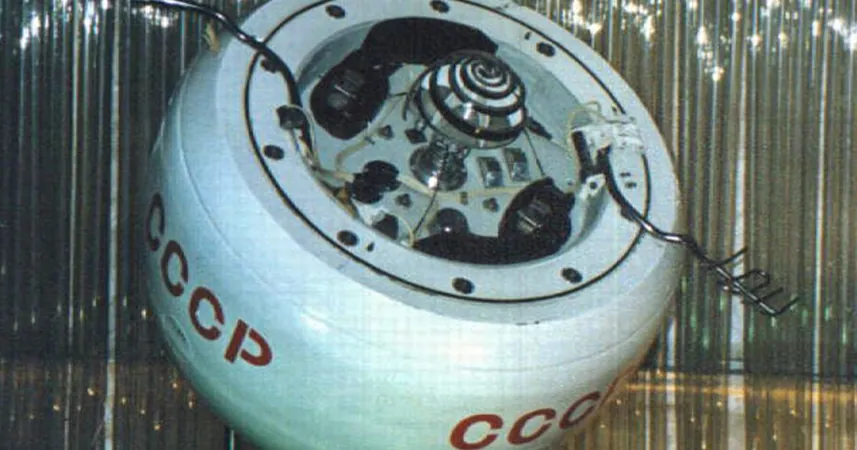
Soviet Spacecraft Kosmos 482 Crash: What You Need to Know
2025-05-10
Author: Sarah
A Piece of Space History Falls Back to Earth
In a dramatic turn of events, the Kosmos 482 spacecraft—originally launched by the Soviet Union in 1972 on a mission to Venus—has re-entered Earth's atmosphere, leading to widespread curiosity and intrigue.
The Final Descent
The European Space Agency (ESA) kept a close watch on the spacecraft's uncontrolled descent, with its last radar detection occurring over Germany. Despite tracking efforts, the craft was ultimately lost to visibility right before its expected crash, prompting the agency to conclude that the reentry had already taken place.
No Damage Reported
Fortunately, reports indicate that no injuries or damages were sustained as a result of Kosmos 482's descent. This outcome aligns with historical trends regarding satellite re-entries.
A Legacy of Failed Venus Mission
Part of the legendary Soviet Venera program, the Kosmos 482 spacecraft was initially designed to explore the harsh conditions of Venus. Although it never accomplished its mission due to a malfunction that left it stranded in Earth’s orbit, this 1,069-pound spacecraft had a remarkable fifty-three-year journey circling our planet.
Space Junk: A Common Occurrence
This incident isn’t an isolated one. In 2022 alone, over 2,400 human-made objects fell back to Earth—a record number, according to the ESA. Most of this debris burned up upon re-entry, while many that survived ended up in oceans. The controlled nature of space debris re-entry continues to pose minimal risks to human life.
Building Resilience for Venus
Kosmos 482 was designed to endure the extreme conditions of Venus, where temperatures soar to around 867°F (464°C). This durability theoretically enhanced its chances of surviving re-entry into Earth’s atmosphere, unlike many other spacecraft.
Minimal Risk to Human Safety
ESA officials have reassured the public that the risk posed by space debris is incredibly low. Statistically, an individual has a less than 1 in 100 billion chance of being injured by falling space debris, which is 65,000 times lower than the likelihood of being struck by lightning.
Tracking the Re-Entry
On the eve of its crash, the U.S. Space Force predicted that Kosmos 482 would re-enter the atmosphere around 1:52 a.m. ET on Saturday, with the expected landing area being in the Pacific Ocean, just west of Guam.



 Brasil (PT)
Brasil (PT)
 Canada (EN)
Canada (EN)
 Chile (ES)
Chile (ES)
 Česko (CS)
Česko (CS)
 대한민국 (KO)
대한민국 (KO)
 España (ES)
España (ES)
 France (FR)
France (FR)
 Hong Kong (EN)
Hong Kong (EN)
 Italia (IT)
Italia (IT)
 日本 (JA)
日本 (JA)
 Magyarország (HU)
Magyarország (HU)
 Norge (NO)
Norge (NO)
 Polska (PL)
Polska (PL)
 Schweiz (DE)
Schweiz (DE)
 Singapore (EN)
Singapore (EN)
 Sverige (SV)
Sverige (SV)
 Suomi (FI)
Suomi (FI)
 Türkiye (TR)
Türkiye (TR)
 الإمارات العربية المتحدة (AR)
الإمارات العربية المتحدة (AR)